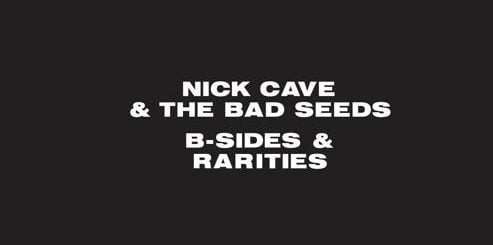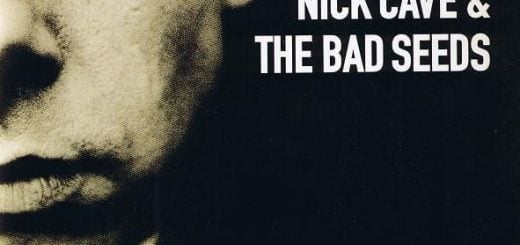Where The Wild Roses Grow by Nick Cave & The Bad Seeds Lyrics Meaning – Unraveling the Tale of Beauty and Tragedy
Lyrics
But my name was Elisa Day
Why they call me it I do not know
For my name was Elisa Day
From the first day I saw her I knew she was the one
She stared in my eyes and smiled
For her lips were the colour of the roses
That grew down the river, all bloody and wild
When he knocked on my door and entered the room
My trembling subsided in his sure embrace
He would be my first man, and with a careful hand
He wiped at the tears that ran down my face
They call me The Wild Rose
But my name was Elisa Day
Why they call me that I do not know
For my name was Elisa Day
On the second day I brought her a flower
She was more beautiful than any woman I’d seen
I said, “Do you know where the wild roses grow
So sweet and scarlet and free?”
On the second day he came with a single red rose
He said “Will you give me your loss and your sorrow”
I nodded my head, as I lay on the bed
“If I show you the roses, will you follow?”
They call me The Wild Rose
But my name was Elisa Day
Why they call me that I do not know
For my name was Elisa Day
On the third day he took me to the river
He showed me the roses and we kissed
And the last thing I heard was a muttered word
As he knelt above me with a rock in his fist
On the last day I took her where the wild roses grow
And she lay on the bank, the wind light as a thief
And I kissed her goodbye, said, “All beauty must die”
And I lent down and planted a rose ‘tween her teeth
They call me The Wild Rose
But my name was Elisa Day
Why they call me that I do not know
For my name was Elisa Day
My name was Elisa Day
For my name was Elisa Day
Amidst the vast expanse of the music landscape, there bloom songs that leave indelible marks upon the soul, serving as totems of narrative brilliance and haunting beauty. ‘Where The Wild Roses Grow’ by Nick Cave & The Bad Seeds is one such song—a ballad weaving the dark tapestry of a doomed love affair between an enigmatic man and Elisa Day, a woman whose fate is as poignant as her namesake flower. We delve into the layers of this intricate composition and explore the meaning behind its lush imagery and chilling climax.
Cave’s lyrical prowess is on full display, as he crafts a narrative that veers gracefully between the perspectives of the ill-fated Elisa and her mysterious suitor. The interplay of lyrics and smoldering melodies echo against the canyon walls of the listeners’ consciousness, leaving one to ponder the convoluted interplay of love, beauty, and mortality. Let’s dissect the narrative threads of this modern murder ballad and understand why ‘Where The Wild Roses Grow’ continues to resonate with audiences, more than two decades after its release.
The Striking Dichotomy of Love and Violence
In the hauntingly beautiful duet ‘Where The Wild Roses Grow,’ Nick Cave & The Bad Seeds fuse the serenity of love with undercurrents of violence, sketching the chilling portrait of a lover’s rendezvous that culminates in tragedy. This juxtaposition of tenderness and brutality is not unheard of in folk and ballad traditions, but in Cave’s hands, it morphs into a contemporary fable that reflects the darker aspects of human desire and possession.
The narrative progresses subtly, its verses painting idyllic scenes that steadily darken as the tale unfolds. There’s a deliberate contrast between the softness of the wild roses and the harsh act that ultimately befalls Elisa Day. Through this dichotomy, Cave offers a reflection on the devastating lengths to which obsession can lead, and the fine line between passion and possession.
Elisa Day: A Symbol of Innocence Lost
Elisa, who evokes the image of the wild rose—beautiful, delicate, and ultimately fleeting—embodies a certain innocence that is both her allure and her undoing. Her name, mentioned repeatedly throughout the ballad, becomes a lament, a reminder of the transient nature of beauty and life itself. The refrain ‘But my name was Elisa Day’ echoes like a sorrowful whisper, stressing her identity that the world, or her killer, has chosen to ignore.
Elisa’s tragic story is not uncommon in the realm of folklore, where women often stand as tragic figures, symbols of purity corrupted. Her naivete in the face of her suitor’s intent cements her as a timeless figure, a personification of all that is ephemeral.
A Rose by Any Other Name: The Veiled Menace
The motif of the rose serves as more than mere pastoral imagery—it’s laced with the foreboding shadow of fate. The rose, beloved for its beauty, also bears thorns—and in the tale of ‘Where The Wild Roses Grow,’ these thorns are fatal. Cave’s use of this particular flower loops in centuries of symbolic resonance, adding layers of depth to the narrative.
Through the song, the rose transforms from a symbol of romantic sentiment to a harbinger of doom. There’s a deliberate ambiguity in the title itself—’Where The Wild Roses Grow’ is as much a reference to the untamed, raw forces of nature as it is a veiled allusion to the final resting place of Elisa Day.
The Haunting Last Words and the Stillness of Finality
The climax of the song occurs in the exchange of last words – Elisa’s feeble acknowledgment of roses, the only beauty left to her, and her suitor’s whispered justification of beauty’s impermanence. ‘And the last thing I heard was a muttered word’ sends a shiver down the spine, crescendoing into silence that speaks volumes, echoing the ultimate surrender to the inevitable.
‘All beauty must die,’ murmured as he places a single rose between her teeth—this line etches itself into memory, the chilling epitaph of her life. The simplicity and finality of this act, juxtaposed with the act of giving life through a kiss, render the murder all the more harrowing.
Uncovering the Song’s Lasting Legacy and Hidden Meaning
The enduring appeal of ‘Where The Wild Roses Grow’ lies in its mystery and its layered narrative structure. Despite its macabre storyline, haunting melodies imbue the song with a richness that continues to captivate audiences and inspire analysis.
On the surface, the ballad speaks of a young woman’s fate at the hands of a lover. However, diving deeper reveals existential threads—the cycles of life and death, the transient nature of beauty, and the destructive face of love. The Bad Seeds’ instrumentation complements Cave’s poetry, evoking a soundscape that beckons the wild and untamable—much like the untamed roses of which he sings. As listeners, we’re left to navigate these layers, pondering the nature of the wild roses and the enigmatic Elisa Day, whose name, though repeated, becomes a symbol of forgotten yet haunting beauty.








